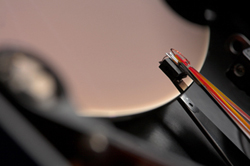Innovative electronics for controlling multiple nano-sensors
A beam supported at one of its ends is the picture we all have of a cantilever. What is astonishing though, is the fact that with modern fabrication technologies we can create cantilevers at really miniature sizes, of the order of nanometres. Moreover these minute cantilevers are capable of mass measurements and therefore serve as mass sensors. With their aid the NANOMASS II project has monitored a multiple of both chemical and physical processes. For the multitude of applications these innovative mass sensors will have, project partners developed not a single prototype but went on and have produced arrays of cantilevers. Using polysilicon, arrays of four and eight cantilevers have been fabricated. The cantilevers have been inscribed at a single nano-area with an electrode connecting them to an outside electronic signal detection and readout circuit. Cantilevers have also been defined on different nano-areas with a metal line connection between them and the controlling circuit. An integrated electronic circuit comprised of a Complimentary Metal Oxide Semiconductor (CMOS) processor serves as the readout and controlling circuit. It has been chosen in such a way as to minimise the noise from the parasitic capacitance. This capacitance occurs as a result of the polarisation of the nano-cantilevers on the nano-area. The use of an insensitive transimpedance configuration to this noise also results in smaller distances between the cantilevers forming the array. Another exciting and extremely useful result from the NANOMASS II project research is that with the aid of an array, differential detection can be achieved. It is possible to functionalise only some of the cantilevers that form the array. Consequently, keeping one inert and exciting the rest of the cantilevers results in optimum detection performance.







